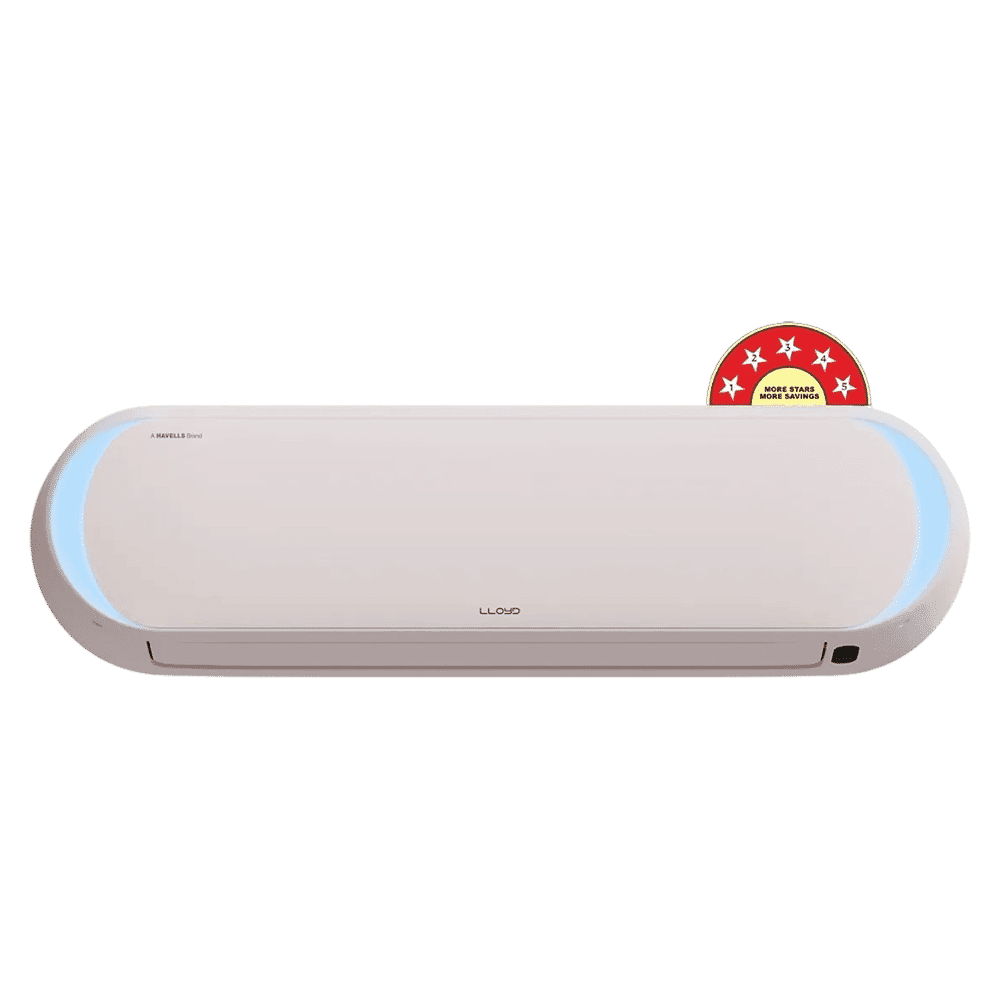
Home Appliances
•05 min read

Buy LLOYD Stellar Art 6 in 1 Convertible 5 Star Inverter Split Smart AC with Voice Assistance (2025 Model, Copper Condenser, GLS18V5FBGST) online at best prices from Croma. Check product details, reviews & more. Shop now!
Have you ever been baffled by the myriad icons on your air conditioner remote control? You're not alone. Many homeowners struggle to understand these symbols, yet knowing the air conditioning symbols meaning can transform your comfort by ensuring you use the right mode at the right time. In this guide, you'll learn to decode common air conditioner icons, grasp various AC modes, and effectively navigate your remote to optimize performance and energy efficiency.
Air conditioning symbols represent the key functions of your unit, offering a way to quickly select cooling, heating, or other settings. These symbols, whether displayed on the remote or on the AC unit display itself, simplify control over different components without needing extensive technical know-how. Yet, many users find these icons confusing, which can lead to inefficient use of the appliance.
The term air conditioning symbols meaning primarily refers to the visual representations used on your AC remote control and unit display. From mode indicators to fan speed settings, each icon is designed to provide immediate information, enabling you to manage your indoor climate effectively. Whether it's selecting the right air conditioning modes or understanding your AC remote control interface, getting familiar with these symbols can enhance your overall experience.
There are several types of icons, including:
Mode Symbols: These indicate functionalities like cool, heat, dry, fan, and auto modes. Fan Speed Symbols: They provide options for different air circulation settings. Temperature Symbols: These help you gauge current and target temperatures.
The most frequently used modes on AC remotes are designed to address specific needs. Let's explore each mode in more detail:
Air conditioning modes like cool mode are denoted by a snowflake symbol. This mode is ideal when you need to rapidly lower the room temperature in hot weather. It efficiently cools your space without unnecessary energy expenditure.
Heat mode, typically represented by a sun symbol, is perfect for warming up your home during chilly seasons. Knowing when to switch to air conditioner functions like heat mode ensures your living environment remains comfortable regardless of the external temperature.
The fan mode, indicated by a fan icon, circulates air without specific temperature adjustments. It’s a great option for days when you need improved airflow without cooling or heating the room extensively. This is one of the common AC remote symbols you’ll see and use often.
Air conditioning settings often include a dry mode, symbolised by a water droplet. This setting reduces humidity levels in your room, making it more comfortable during monsoon seasons or in humid areas while maintaining a moderate temperature.
Auto mode automatically adjusts the air conditioner's output based on the room’s ambient temperature. Recognisable by a circular arrow or the word 'AUTO', this mode ensures a consistent environment, optimising both comfort and energy usage and simplifying the process of maintaining your desired room temperature.
Your AC remote control is an interface that brings all these unique functions within reach. It typically houses buttons for quick toggling between various modes, adjusting temperatures, and setting timers. Many remotes also include icons that serve as a comprehensive AC symbols guide to help you navigate the device effortlessly.
A typical AC remote control layout includes a power button, numeric controls for temperature settings, and various mode symbols. A systematic arrangement ensures each function is easily accessible, reducing the complexity often associated with modern air conditioner controls.
Every icon on your remote plays a crucial part. The AC remote symbols provide clear guidance: for instance, the snowflake indicates cool mode, the fan icon depicts air circulation, and the sun symbol stands for heat mode. As you grow accustomed to these symbols, adjusting your air conditioner becomes second nature.
Pro Tip from Tata Neu
Did you know that using auto mode not only maintains a consistent temperature but also optimises energy consumption? Leveraging auto mode allows your unit to adjust its output in response to room conditions, boosting both comfort and energy efficiency.
Most modern AC units come with a dedicated control panel displaying selected settings and active symbols. The AC control panel provides a clear snapshot of your air conditioner's status. Meanwhile, the air conditioner display often mirrors the remote's guide, showing icons for current temperature, humidity levels, and operating mode.
Learning to read the control panel is as crucial as understanding your remote. The panel is designed for quick glances, allowing you to confirm that your chosen mode or setting is active. This streamlined approach ensures that adjustments are quick and hassle-free.
The display plays an essential role in conveying operational details. It uses clear symbols to indicate everything from the active mode to timing settings. Familiarising yourself with these gauges can prevent any guesswork, ensuring your unit consistently operates at its best.
Maximising the utility of your air conditioner extends beyond understanding its icons. A few practical strategies can further enhance performance and energy efficiency throughout the year.
Adjust your settings based on seasonal conditions. Whether it's opting for cool mode during the summer or switching to heat mode in colder months, intelligent use of air conditioning settings can drastically reduce energy consumption while keeping the environment comfortable.
Regular maintenance is critical to the longevity of your unit. Clean filters and schedule routine checks to ensure your AC functions at peak performance. Additionally, utilising energy-saving modes not only cuts down on bills but also contributes to a greener environment. Simple steps like setting an appropriate temperature and using the timer function can help conserve energy without sacrificing comfort.
Advanced features, such as sleep and turbo modes, offer extra convenience. These settings can further fine-tune comfort based on your lifestyle. Understanding every symbol on your remote empowers you to select the perfect setting for every moment, aligning with modern, technology-driven lifestyles.
This symbol typically represents cool mode, which is used to lower the room temperature efficiently.
Auto mode is often indicated by a circular arrow or the word 'AUTO' on your AC display, showing that the unit is adjusting itself to the current room conditions.
The water droplet icon signifies dry mode, which primarily reduces humidity in your room without drastically altering the temperature.
The fan symbol denotes the fan mode, designed to circulate air without engaging the cooling or heating functions, providing an energy-efficient solution for ventilation.
Typically, a small reset button on the remote, often recessed to prevent accidental presses, allows you to reinitialize your device.
Decoding your air conditioner's symbols is key to optimising performance and ensuring comfort all year round. By understanding modes like cool, heat, dry, fan, and auto, and mastering your remote control and AC display, you can effortlessly manage your home's climate. Leveraging features such as auto mode not only enhances comfort but also contributes to energy efficiency. With practical tips for maintenance and usage, you're now equipped to make informed decisions and enjoy a seamless air conditioning experience. Trust in advanced technology and expert guidance to elevate your comfort and control in every season.